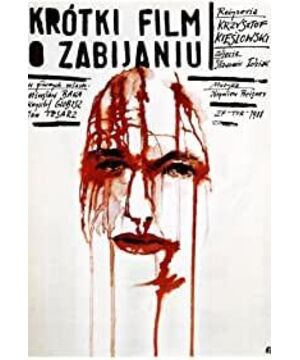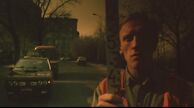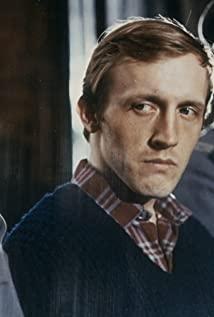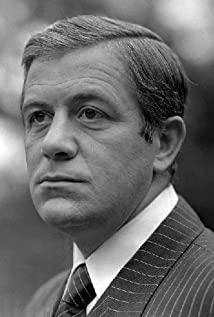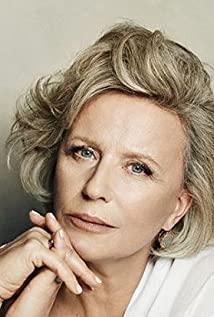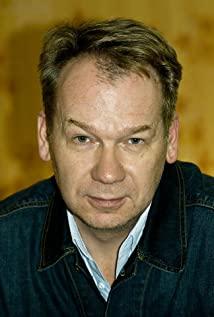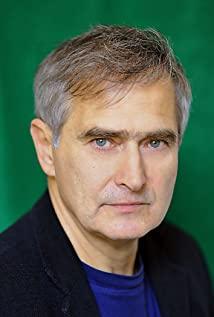Judging from the structure of the film, with Yazek's murder as the boundary, the first part shows "the individual as the murderer". The title accurately tells the audience that the murder is naturally the climax of the film. But what Kieslowski was trying to convey was not as simple as the fact that Yazek was an unquestioned murderer or that he "killed." "Murdering Short Film" opens with the corpse of a cockroach on a stone, a dead mouse in the water, and a cat hanged by a group of children - they represent a senseless and merciless cruelty, and also the "killing" The extension of an event. In addition to these, the film spends a lot of time showing details of the lives of Yazek, the taxi driver, and the lawyer Pete before getting to the murder. From the perspective of the development of the plot, the lack of these details does not seem to have a big impact, and the ending will make you understand that every scene that seems to be insignificant before is actually very interesting.
The first is the details about Yazek. He wandered boredly on the street, walked to the overpass, pushed stones down and smashed cars under the bridge; deliberately scare pigeons off the square; knocked down a whistling youth in the toilet; spit into a coffee cup... Looking at these, he seems to be the image of a little gangster doing nothing. But he's not quite like that: he strikes up a conversation with a painter who paints a portrait of a little girl and is concerned about the price of a portrait; he wants to go to the movies and asks the conductor if the movie is good and what she's doing; he goes to the photo studio to zoom in A picture of a little girl, and asked timidly: "Is it possible to tell from the picture that a person is dead?"; The two little girls outside the glass window of the shop were playing, with bright smiles... He seemed to have a lot of enthusiasm for life, not boredom or indifference. Combining all the details before Yazek's murder, it seems difficult for us to make an absolute judgment - as a murderer, he is complicated.
The driver he killed was also an elusive man. On the one hand, he will deliberately not carry young men and women who have been waiting for a long time and drunk passengers, he will deliberately honk the horn to scare away other people's pet dogs, and there is a sinister head pendant hanging on his window; A person who loves cleanliness, he will feed sandwiches to puppies on the side of the road, and he will deliberately stop the car to make way for the children... He is as complicated as Yazek.
Why did the director spend so much time talking about these details? How does the character of the slain driver relate to the whole incident? These details and the opening "death display" are actually part of the explanation for the murder of the murderer as an individual. Everyone's character is complex, and everyone has "excess energy" that needs to be released (like the painter who mocked Yazek, like the group of hot-blooded young people who passed by Yazek, just like Yazek witnessed The gang fight incident, like the old lady who scolded Yazek for no reason), everyone's love for other lives is under the love for his own life. When the "evil side" has the upper hand, then the slaughter occurs, and then the homicide is staged.
The second murder is the murder of the system—the punishment is also the murderer. Punishment is supposed to uphold justice, so why do you say that punishment is also a murderer? There is a hint in "Murdering Short Film", and the director's tendency can be found by comparing the process of the two murders and combining Yazek's performance before the execution. Kieslowski is no slouch in detail, and he puts the two murders in front of the audience calmly, restrained, and documentary-like. Before the murder, Yazek wrapped the rope, searched for "prey", and made a lot of preparations; before the execution, the person in charge of the execution carefully adjusted the execution instruments. The rope was Yazek's murder weapon; Yazek was hanged with the rope. Yazek covered the driver's eyes with a blanket; Yazek was also blindfolded before his execution. The driver's dentures were knocked out and fell into the dirt; Yazek was hung up and incontinent. How similar the two murders were!
This is certainly not enough to justify the sentence as "murderer". The film does not tell the process of arresting and trying Yazek, and the second half starts directly with Yazek being sentenced to death. In this part, the lawyer becomes the main clue. The lawyer is skeptical of the justification of the severe punishment, and in a sense he acts as the judge of the punishment as the murderer. In the last part of the lawyer's interview, he admitted that he had no idea why he wanted to be a lawyer after he had been exposed to many cases. If he had to answer, it was that he wanted to know those people he could not meet in other places. Peter does his best to defend Yazek, and he goes to see Yazek in prison. The scene in the prison is very interesting, the scene is only close-up, and the two people are constantly fighting back and forth. There are three sets of such shots, with durations of two minutes and twenty-nine seconds, two minutes and forty-seven seconds, and twenty seconds. Just imagine, what kind of experience is it to have only two close-ups of faces on the screen for such a long period of time? ! These three sets of shots do not make people feel uncomfortable, and they even forget to pay attention to them. If you think about it carefully, you will think that this is the most suitable way of expression, because this section is in line with the narrative-Yazek explained the funeral and talked about himself The dead sister showed his most vulnerable and sensitive part without reservation. The director tries to get us as close to the character as possible, to focus on his inner world. This paragraph is followed by the execution of Yazek's execution. In the face of death, Yazek is also afraid and struggling. If we understand the fragility, softness, remorse, and attachment to life of a murderer, there will undoubtedly be compassion. As a result, we can’t help but question the rationality of the death penalty—at this time, the punishment becomes an out-and-out murderer, who murders not only life, but also many “possibilities” of this life. The ideal punishment is not to act on criminals, but to deter them before they become criminals. But how exactly do we deal with criminals after the inevitability of crime? We have compassion for him, and does he have compassion for the victim? Yazek didn't kill the driver all at once. When the driver was dragged out of the car, he asked Yazek not to kill him. Although Yazek was in pain, it was almost unbearable, but he still threw a stone at the driver... We will eventually have to choose to be responsible to the righteous side. It seems that it is not time to repent. can be a reason to be forgiven. Just how can we give the victim a reasonable explanation and prevent the punishment from becoming a "murderer"? This is the central question raised by the film.
In addition, in order to express the director's thoughts more effectively, the film also has many unique features in form. Kieslowski and cinematographer Iziak creatively used green filters throughout the film, creating an atmosphere of heaviness, emptiness and depression. Not only that, he also deliberately used black to cover unnecessary details (for example, the dead cockroach, dead mouse, and dead cat in the title are completely dark, and when the driver was killed, the pictures occupied by the driver's body were deliberately made black)— - Only show the audience what he wants them to pay attention to the most, reminding them to pay attention to what deserves the most attention. The strong and deliberate black cover of the selected pictures is most prominent in the first part, but is obviously reduced in the latter part or replaced by other means that do not seem so deliberate. For example, during the execution of Yazek, the choice of space was used to remove the complicated and redundant images: in the interior space of Yazek, the wall serves both as the boundary separating the two spaces and as the foreground of the shooting, subtly blocking a part of it The interior space highlights the suspended Yazek. The changes before and after are closely related to the director’s intentions: the first part is to focus on the characters, and it is only necessary to grasp the necessary details closely related to the characters, and do a good job of character modeling and foreshadowing; the latter part is the expression of the theme, which is also mixed with the director. The revealing of emotional tendencies requires the viewer's overall grasp and understanding. This requires flexibility, tension, and not coercion.
In the film, lawyer Peter said: "There has been no law that can prevent crime since it started." Going a step further than the theme of the film, between the individual as a murderer and the punishment, what we should consider most is how the individual should avoid becoming a murderer, not how the punishment can be reasonable and just. There is this point of view: "The punishment for a murderer is to use the state apparatus to kill him in the name of justice. We are using murder to prevent murder, and to strengthen the deterrent force of this commandment by launching a massacre. The law is detailed, only It can prove the weakening of self-discipline or moral law." The idea of maintaining justice entirely by virtue is indeed very utopian, but we have denied self-salvation since we made laws and used punishment to regulate society. These two murderer images are all of us. We first created a murderer who represented an individual, and then invented the penalty, and murdered him in the name of justice-it must be admitted that this is the tragedy of mankind.
View more about A Short Film About Killing reviews


